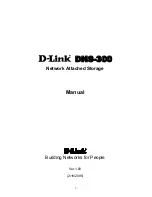
Crystal Vision
The card edge display
TANDEM-110 User Manual R1.8
46
07/07/2010
Main menus
Select main menus with MENU switch levers as follows:
Menu switch
Menu
Status/Config menus – all levers OFF (UP). This should be the default
setting if card edge controls are not in use
Preset menu – lever 2 ON (DOWN) all others OFF (UP)
PLL menu – lever 3 ON (DOWN) all others OFF (UP)
Audio routing menu – lever 4 ON (DOWN) all others OFF (UP)
Setup menu – lever 5 ON (DOWN) all others OFF (UP)
Stereo/mono menu – levers 4 and 4 ON (DOWN) all others OFF (UP)
Audio gain menu – levers 5 and 6 ON (DOWN) all others OFF (UP)
Flag & status menu – lever 6 ON (DOWN) all others OFF (UP)
Card edge display codes
A condensed code is used to maximise the information that can be shown on the ten-bit
status display. Codes used for sources and destinations are as follows:
Code
Meaning
Comments
An
De-embedded audio source on side 1
Bn
De-embedded audio source on side 2
Cn
Embedded audio destination on side 1
Dn
Embedded audio destination on side 2
Gn
Option card audio source on side 1
Option card must be AIP2, DIP2 or RS4
Hn
Option card audio source on side 2
Option card must be AIP2, DIP2 or RS4
In
Option card audio destination on side 1
Option card must be AOP2 or DOP2-75/110
Jn
Option card audio destination on side 2
Option card must be AOP2 or DOP2-75/110
1.1
AES 1 or Stereo Pair 1 on side 1
Each analogue or digital output has two buffered
outputs (labelled a & b) which may be available at
the rear connector. Please see the Installation section
for connector details.
1.2
AES 2 or Stereo Pair 2 on side 1
2.1
AES 1 or Stereo Pair 1 on side 2
2.2
AES 2 or Stereo Pair 2 on side 2
‘ ’n
New audio group
Group n does not exist in the SDI stream
=n
Existing audio group
Group n already exists in the SDI stream
Note:
n denotes “1 2 3 4” individual active mono channels.
The following diagram illustrates the use of the card edge display codes for four basic
embedding or de-embedding scenarios available for the TANDEM-110:
















































